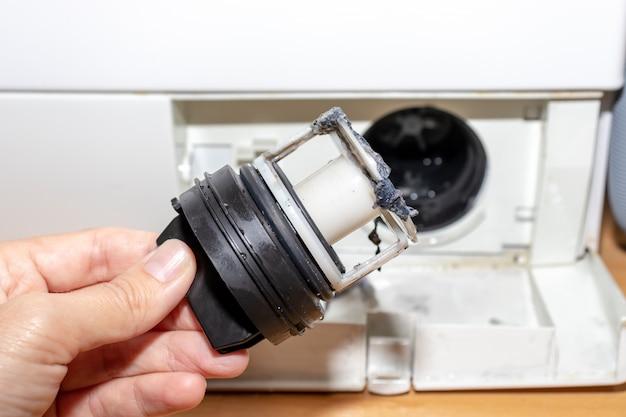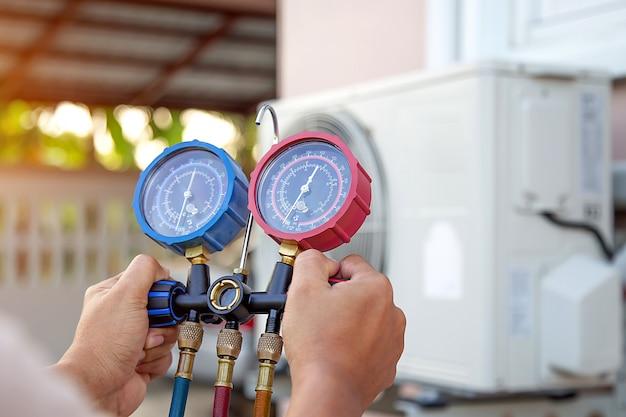Maintaining your AC system is crucial for its efficient functioning. One important aspect of AC maintenance is cleaning the condensate pump. If you’re wondering how to ensure your condensate pump stays in top shape, you’re in the right place! In this blog post, we will provide you with a comprehensive guide on how to clean your condensate pump effectively.
From clearing clogged condensate pipes to using vinegar or bleach, we’ll cover it all. You’ll also learn about the signs of a clogged condensate pump, the lifespan of the pump, and its cost of replacement. Plus, we’ll give you tips on making your condensate pump quieter and explain what to do when it stops working.
So, if you want to keep your AC system running smoothly and prevent any potential issues, let’s dive in and explore the world of condensate pump cleaning!
How to Keep Your Condensate Pump Sparkling Clean
If you want your condensate pump to keep doing its job effectively and efficiently, giving it regular TLC is a must. Cleaning this essential machine doesn’t have to be a daunting task. In fact, it can even be a fun and rewarding experience (yes, really!). So grab your cleaning gloves and get ready to make your condensate pump shine like a superstar.
Gather Your Cleaning Arsenal
Before diving into the magical world of condensate pump cleaning, make sure you have everything you need at your disposal. Here’s a quick checklist to ensure you’re fully prepared:
1. Rubber Gloves
You don’t want any unwanted funk on your hands, do you? Put on a pair of trusty rubber gloves to keep things hygienic and germ-free.
2. Cleaning Solution
No need to go overboard here. Mix a simple solution of warm water and mild soap or dish detergent. This concoction will work wonders at cutting through grime and build-up.
3. Soft Brush or Toothbrush
Choose a soft-bristled brush or an old toothbrush that has retired from its teeth-cleaning duties. This will help you tackle those tight corners and crevices with ease.
4. Empty Bucket
For all that dirty water and gunk, you’ll need a trusty bucket by your side. Make sure it’s clean and ready to collect the mess.
Step 1: Turn Off the Power
Safety first, my friend! Prevent any accidents by turning off the power supply to your condensate pump. This will keep electric shocks at bay and ensure you have a worry-free cleaning experience.
Step 2: Remove the Exterior Cover
With your rubber gloves still on, gently remove the exterior cover of the condensate pump. You might need a screwdriver or a wrench to accomplish this. Set the cover aside and take a moment to appreciate the inner workings of this marvelous machine.
Step 3: Give It a Thorough Clean
Now it’s time to get down and dirty (not literally, thanks to those gloves!). Dip your brush or toothbrush into the cleaning solution and start scrubbing away at the pump’s components. Pay special attention to the drainage tube, float switch, and any other visible parts.
Step 4: Rinse, Rinse, Rinse
Once you’re satisfied with your cleaning prowess, rinse all the parts with clean water. Make sure no soap residue is left behind as it can interfere with the pump’s functionality. It’s like giving your condensate pump a refreshing shower!
Step 5: Dry and Reassemble
Take a clean towel and gently pat dry all the components. Give them some time to air dry completely before reassembling the pump. Trust us, you don’t want any moisture lurking around when you switch the power back on.
Step 6: Power It Up
With the power restored, your condensate pump is ready to resume its duty of keeping your HVAC system running smoothly. Give yourself a pat on the back for a job well done!
Whether you’re a cleaning aficionado or just someone who wants to ensure their condensate pump’s longevity, this cleaning guide has got you covered. Remember, a clean condensate pump is a happy condensate pump, and a happy condensate pump means a happy home. So go forth and clean with gusto!
FAQ: How to Clean Condensate Pump
Welcome to our comprehensive FAQ section on cleaning condensate pumps! If you’re wondering about the best practices for maintaining and cleaning your condensate pump, you’ve come to the right place. We’ve compiled a list of the most frequently asked questions regarding this topic and provided detailed answers so you can keep your condensate pump running smoothly. Let’s dive in!
How much vinegar do I need to clean my AC drain line
To clean your AC drain line with vinegar, mix equal parts water and vinegar. You’ll typically need around one cup of vinegar for an effective cleaning solution. However, it’s important to note that the amount may vary depending on the size and severity of the clog. Start with one cup and adjust accordingly.
How do you clear a clogged condensate pipe
Clearing a clogged condensate pipe might sound like a daunting task, but fear not! First, locate the access point of the pipe. Then, use a wet/dry vacuum to suck out the blockage or use a thin wire to gently unclog the pipe. Alternatively, you can try using a mixture of vinegar and water to dissolve the obstruction. Remember to turn off your AC system before attempting any cleaning.
Why does my air conditioner smell like vinegar
If your air conditioner emits a vinegar-like smell, it’s likely that bacteria or mold is growing inside the condensate line. This can result from excess moisture and a lack of regular cleaning. Don’t worry, though! By cleaning your condensate line with vinegar, you can eliminate the odor and prevent further growth.
How long will a condensate pump last
The lifespan of a condensate pump can vary depending on various factors, including usage, maintenance, and quality. On average, a well-maintained condensate pump can last anywhere from 5 to 10 years. However, regular cleaning and inspection can significantly extend its lifespan.
How do you clean a clogged AC drain
Cleaning a clogged AC drain requires a few simple steps. First, turn off your AC system to avoid any accidents. Then, locate the drain line and remove any visible debris. For a thorough cleaning, you can flush the drain line with a mixture of vinegar and water. Finally, use a wet/dry vacuum or a thin wire to clear any remaining clogs.
Can I put vinegar in my condensate pump
While vinegar is an excellent cleaning agent for your condensate pump, it’s essential to use it in the right way. Avoid pouring vinegar directly into the pump as it can damage the internal components. Instead, clean the condensate pump by pouring the vinegar solution into the AC drain line, allowing it to flow through the pump naturally.
How often should you pour bleach in AC drain
To prevent mold and bacterial growth, it’s recommended to pour a mixture of bleach and water into your AC drain at least once a month. This simple step can maintain the cleanliness of your system and ensure the smooth operation of your condensate pump.
How do I know if my condensate pump is clogged
A clogged condensate pump can manifest in a few telltale signs. Look out for water pooling around your AC unit or excessive humidity in your home. Additionally, strange noises coming from the pump or frequent cycling on and off can indicate a clog. If you suspect your condensate pump is clogged, it’s best to address the issue immediately to avoid further damage.
Can I use Drano in my AC drain line
Using Drano or other similar drain cleaners in your AC drain line is not recommended. These products contain harsh chemicals that can damage the components of the condensate pump and pose a risk to your health. Stick to safer and more natural methods like vinegar and water mixtures to clean your AC drain line effectively.
How can I make my condensate pump quieter
If your condensate pump is making a noticeable noise, there are a few steps you can take to reduce the sound. First, ensure that the pump is level and securely mounted. Using rubber pads or insulating materials can also help dampen vibrations. Additionally, regular cleaning and maintenance can prevent debris buildup and potential noise.
What is the lifespan of a condensate pump
On average, a well-maintained condensate pump can last between 5 to 10 years. However, factors such as usage, maintenance, and quality can influence its lifespan. By adhering to a regular cleaning routine and promptly addressing any issues, you can maximize the lifespan of your condensate pump.
How much does it cost to replace a condensate pump
The cost of replacing a condensate pump can vary depending on several factors, including the pump model, brand, and the complexity of the installation. On average, you can expect to spend around $150 to $300 for a new condensate pump, excluding any labor costs for professional installation.
How reliable are condensate pumps
Condensate pumps are generally reliable when properly maintained and used correctly. Like any mechanical device, they can experience occasional issues, such as clogs or component failures. Regular cleaning, inspections, and prompt attention to any problems can ensure the reliable operation of your condensate pump.
How often should you clean your condensate pump
Cleaning your condensate pump should be part of your regular HVAC maintenance routine. It is recommended to clean your condensate pump at least once every three to six months. However, if you notice any signs of clogs or reduced efficiency, you should clean it more frequently.
What happens when a condensate pump stops working
When a condensate pump stops working, the excess condensate water from your AC unit won’t be pumped away as intended. This can lead to water damage, moisture buildup, and even mold growth. It’s crucial to address any issues with your condensate pump promptly to avoid these potential problems.
Where do you put bleach in a condensate pump
To clean your condensate pump with bleach, do not pour bleach directly into the pump. Instead, mix a solution of bleach and water and pour it into the AC drain line. The bleach will flow through the pump naturally, helping to kill any mold or bacteria that may be present.
Where is the condensate pump located
The condensate pump is typically located near your indoor air handler or furnace. In most cases, you can find it in the basement, utility closet, or crawl space. Look for a small, rectangular-shaped unit with an outlet pipe connected to it. If you’re unsure, consult your HVAC system’s manual or contact a professional for assistance.
Is bleach or vinegar better for AC drain line
Both bleach and vinegar have their merits when it comes to cleaning your AC drain line. Vinegar is excellent for removing mold and bacteria, while bleach is effective at killing these organisms. Ultimately, it depends on your personal preference. Some prefer the milder scent of vinegar, while others find the smell of bleach more reassuring. Whichever option you choose, remember to dilute it before using.
Can I put bleach in my condensate pump
No, you should not put bleach directly into your condensate pump. Bleach is a strong chemical that can damage the internal components of the pump. Instead, pour a diluted bleach and water mixture into the AC drain line. This way, the bleach will naturally flow through the pump without causing harm.
We hope this FAQ section has shed some light on how to clean your condensate pump effectively. By following these tips and performing regular maintenance, you can ensure the optimal performance of your condensate pump and keep your AC system running smoothly. If you have any further questions, don’t hesitate to reach out to a professional HVAC technician for assistance. Stay cool!

